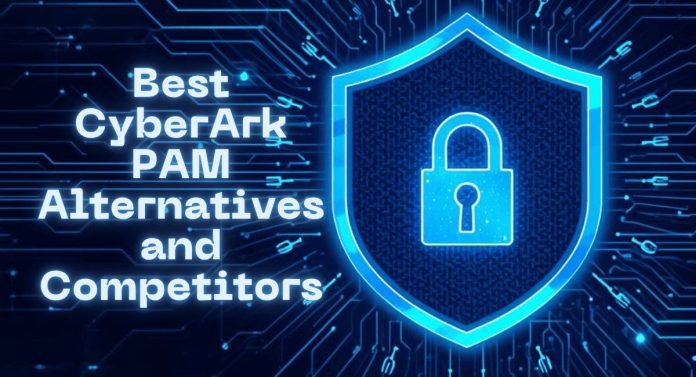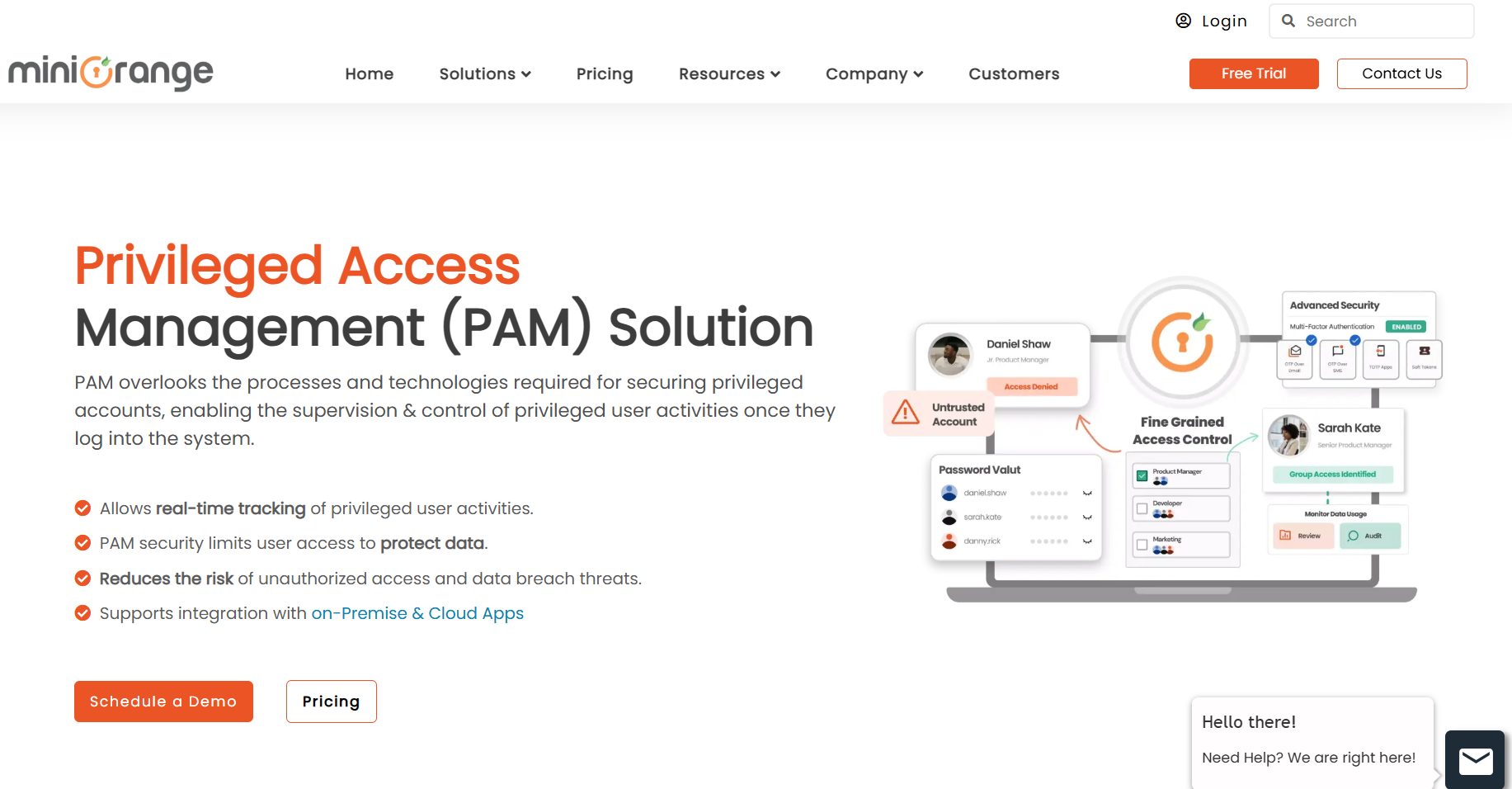In this post, I will showcase the top CyberArk PAM alternatives and competitors for 2026.
Surprisingly, 74% of data breaches involve the abuse of privileged credentials belonging to the superadmin. With the global Privileged Access Management (PAM) market poised to reach $14.5 billion by 2027 (CAGR 12.3%), organizations must act fast and seek low-cost options to lock down privilege.
This guide will help you find the best CyberArk PAM alternative with actionable data such as deployment timeframes, ROI benchmarks, and actual customer metrics. You’ll discover why PAM provides both immediate wins and long-term value that surpasses IAM security.
Table of Contents
CyberArk Privileged Access Manager (PAM) Overview
CyberArk has stated that it protects privileged accounts for more than 50% of Fortune 500 companies. The vault, session monitoring, and compliance modules drive an average 68% decrease in breach costs.
On the other hand, many reviews indicate that using CyberArk can be time-consuming, requiring 6–12 months for implementation, and expensive, with annual costs exceeding $ 250,000 for many enterprises.
CyberArk PAM Solution Pros
- Manages over 7 million privileged accounts worldwide
- More than 400 integrations across cloud, DevOps, and virtualization
- Real-time forensics for monitoring live sessions and reporting
- Compliance templates for GDPR, HIPAA, and PCI DSS
CyberArk PAM Solution Cons
- CyberArk’s solutions are generally considered expensive.
- Average deployment time is 6 – 12 months.
- 45% of customers reported a steep learning curve.
- Support SLA for mid-market accounts tend to be longer.
- Rating: G2: 4.5/5
- Rating: G2: 4.5/5
User Dissatisfaction
Our experience with the CyberArk PAM solution has been nothing short of a nightmare. The vision is very good; however, there are too many product issues that have led to numerous outages and frustration. Also, it is the most expensive product in the industry and should be more affordable for small and medium-sized companies. Customer support should also be more effective. -Sr. Info. Security Engineer (Industry: Banking)
Due to the long deployments and high TCO prices, many teams seek lighter, easier PAM alternatives.
Top 5 CyberArk PAM Competitors
We reviewed over 20 vendors, 2,000+ reviews from G2 and Capterra, and sourced data from credible industry reports. We evaluated deployment timelines, ROI timelines, and feature completeness to develop a comprehensive PAM solution tailored to your business needs, identifying the best CyberArk PAM alternatives.
1. miniOrange PAM Solution
The miniOrange Privileged Access Management (PAM) solution is one of the leading PAM tools in the market. It is unique and widely recognized for its unified and scalable platform. Users report that it can be deployed in 10 days or less, delivers ROI within 90 days, and automates 60% of credentialing work in 28% less time and at a lower cost compared to CyberArk.
Key Features
- Central vault for credentials, keys, and certificates
- Just-in-time access, with adaptive MFA (risk-based) MFA
- Live session recording and alerting with threat detection
- RESTful APIs for DevOps and CI/CD automation
- Cloud native, on premise, or hybrid deployment
Why is miniOrange Superior?
1. Fastest Time To Value
Deploy in 10-14 days vs. 180-day average industry time including CyberArk to deploy – your organization is secure and productive in less than two weeks.
2. Transparent & Modular Pricing
A reasonable pricing based on only the modules used – no hidden or additional fees. Customers report 28% lower three-year pricing over a CyberArk solution.
3. Customer Satisfaction
95% of support tickets are resolved at first contact, and with a 5.0/5 rating on G2, customers are consistently delighted.
4. Demonstrated Automation
Automated credential rotation allows security teams more time to focus on security initiatives by reducing the manual effort required by a secure credentialing workflow by 60%.
miniOrange Cons:
- miniOrange PAM Solution may require expert support during initial setup to get perfect optimization in large, complex environments
- Advanced customizations are in the planning phase
- Certain enterprise-grade features are for specific businesses
miniOrange Ratings & Reviews:
G2: 5.0
2. Delinea
Delinea (formerly Thycotic and Centrify) is a popular Identity and Access Management provider. Its mature PAM platform is suitable for both on-premises and cloud environments. The focus on speed of deployment and ease of use has led to significant adoption by mid-sized companies and departments.
Delinea PAM Pros
- Fast, agentless PAM deployment
- Easy to use with role-based policy management
- Good vaulting and session monitoring
- Active community and frequent features releases
Delinea PAM Cons
- Pricing tiers can be a significant jump for premium modules
- Limited flexibility in built-in report templates
Delinea Ratings & Reviews:
G2: 4.8
3. One Identity Safeguard (PAM)
One Identity Safeguard consists of a single appliance-based solution that supports credential vaulting, session recording and behavior analytics.
It is well-positioned within the broader Identity and Access Management suites, which support an all-in-one bundle for enterprises.
One Identity PAM Pros
- Preconfigured security policies in a hardened appliance
- Advanced analytics and/or anomaly detection
- Deep integration with Active Directory and Identity Governance
One Identity PAM Cons
- On-premise hardware appliance limits cloud options
- User interface doesn’t feel as modern like other newer cloud native options
One Identity Safeguard Ratings & Reviews
G2: 3.5
4. ARCON PAM Suite
ARCON employs AI driven risk scores which help avoid ~70% of unauthorized access attempts. Large enterprises reported ARCON cut compliance audit times in half.
ARCON PAM Suite Pros
- Dynamic risk access policies
- AI engine detects ~90% of suspicious sessions in real time
- Customizable dashboards with ISO 27001, NIST and SOX reports
ARCON PAM Suite Cons
- Implementation of software requires ~200 professional-services hours
- There is a learning curve for establishing custom reports.
ARCON Ratings & Reviews
G2: 4.4
5. BeyondTrust PAM
BeyondTrust boasts a 100% on-prem footprint reduction with its SaaS-first model, and includes vulnerability scanning, which reduces remediation time by 50% on average.
BeyondTrust PAM Pros
- Completely cloud hosted in 72 hours or less
- The built-in vulnerability scanning includes automatic remediation recommendations
- Granular access control process privilege elevation results in 45% less admin overhead
BeyondTrust PAM Cons
- Customizations are limited to 5 total API extension points
- Premium analytics module, increases subscription fee by 35%
BeyondTrust PAM Ratings & Reviews
G2: 3.3
Choosing the Right CyberArk PAM Alternative
When evaluating CyberArk alternatives for PAM as part of your business case, as a buyer, you need to consider several key points. As per the above data miniOrange offers goes above and beyond when it comes to –
- 30% faster deployment than legacy platforms.
- 28% average savings in total cost against CyberArk over three years.
- 94-100% first contact support resolution rate.
miniOrange stands out against CyberArk with its stable and mature PAM features, including Privileged Password Management, Privileged Session Management, real-time monitoring and recording, Just-in-Time Access Management, Role-Based Access Controls, compliance readiness, Endpoint Privilege Management, and agentless deployment.
However, it is always recommended to schedule a demo of any product by calling and discussing your requirements. With miniOrange, you can also compare solutions from other CyberArk competitors such as Delinea, BeyondTrust, ARCON, and One Identity side by side to get a clearer understanding.
FAQs
Why look for CyberArk alternatives?
Organizations will look for alternatives to CyberArk when implementation and licensing costs from CyberArk are too high for a small to medium-sized team and when the architecture by CyberArk is complex and requires dedicated administrators. Delays due to limited out-of-the-box integrations with niche systems or legacy applications also contribute to the lack of efficiency, and ultimately the total cost of ownership.
Who are CyberArk’s main competitors in the PAM space?
The main competitors are miniOrange, BeyondTrust, Delinea, One Identity, HashiCorp Vault, ManageEngine PAM360 and Okta. In general, many of these PAM platforms offer simpler deployment, alternative licensing flexibility, and/or utilize cloud-native architectures that cater to the diverse needs of organizations. Moreover, a good PAM solution integrates with SIEM tools to detect malicious intent before any incident can occur.
Why is CyberArk so expensive?
CyberArk is expensive due to the enterprise-grade security functionality it provides (e.g., advanced threat analytics, session management/monitoring and privileged behaviour monitoring) for large, regulated environments. Factors such as 24/7 support, maximum customization options, and an entrenched brand position further amplify licensing and maintenance costs.
INTERESTING POSTS
- Maximizing Security with Minimal Resources: A Practical Guide to Privileged Access Management
- Why Privilege Control Is Vital for Cybersecurity Success
- Why Smart CEOs View Outsourced IT as Their Secret Competitive Weapon
- Insider Risk Management Fundamentals: 10 Best Security Practices for Implementation
- Responsible Web Intelligence at Scale: An MCP-Driven Architecture
- Exclusive Interview With Dan Olson, CEO Of UpCity
About the Author:
Meet Angela Daniel, an esteemed cybersecurity expert and the Associate Editor at SecureBlitz. With a profound understanding of the digital security landscape, Angela is dedicated to sharing her wealth of knowledge with readers. Her insightful articles delve into the intricacies of cybersecurity, offering a beacon of understanding in the ever-evolving realm of online safety.
Angela's expertise is grounded in a passion for staying at the forefront of emerging threats and protective measures. Her commitment to empowering individuals and organizations with the tools and insights to safeguard their digital presence is unwavering.







